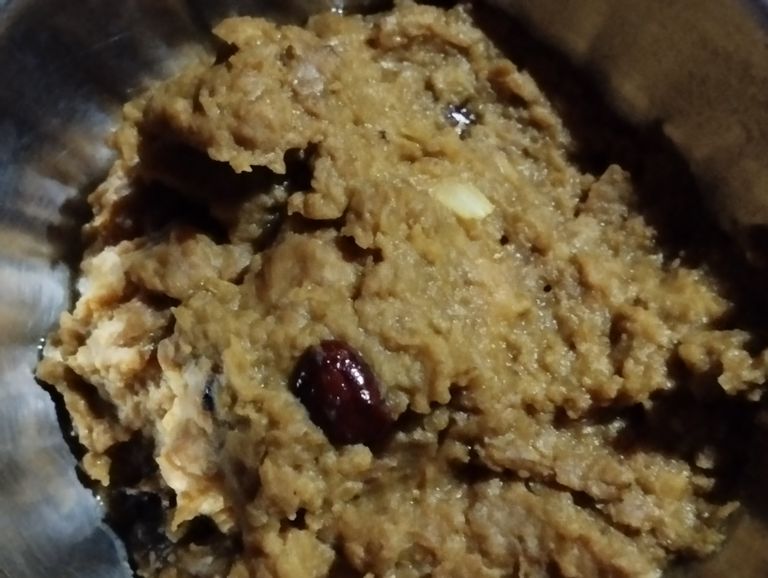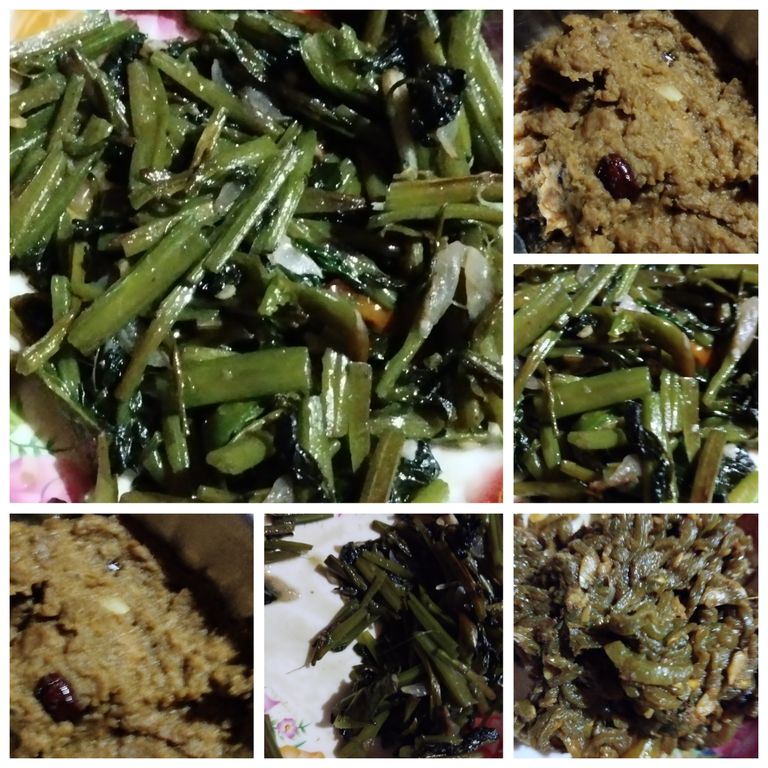
The Health Benefits of Ash Gourd Chal Kumra.
Ash gourd, also known as Chal Kumra in Bengali and Winter Melon or Wax Gourd in English, is a versatile vegetable that has been a part of traditional diets across Asia for centuries. This nutrient-dense vegetable is known for its subtle flavor, high water content, and remarkable health benefits. Despite its bland taste, ash gourd is a powerhouse of essential nutrients, offering a range of therapeutic properties that can positively impact overall health. This blog explores the numerous benefits of incorporating ash gourd into your daily diet.
- Rich in Nutrients and Low in Calories
Ash gourd is rich in several vital nutrients while being low in calories, making it an ideal food for those looking to manage weight. It contains:
Vitamins: A good source of vitamin C and some B vitamins (like thiamine and niacin).
Minerals: Contains minerals like calcium, potassium, phosphorus, magnesium, and iron.
Fiber: High fiber content aids in digestion.
Antioxidants: The presence of antioxidants helps in fighting free radicals, thus preventing cell damage.
Due to its low-calorie profile, it is a great addition to a weight-loss diet, providing essential nutrition without the extra calories.
- Aids in Digestion
One of the most well-known benefits of ash gourd is its positive effect on digestion. The high water and fiber content in ash gourd act as a natural laxative, which helps in preventing constipation. It also supports the digestive system by enhancing the secretion of digestive juices and keeping the digestive tract clear of toxins.
Ash gourd is also beneficial in reducing acidity and ulcers. Its cooling nature helps soothe inflammation in the stomach lining, making it a perfect vegetable for those suffering from gastric issues or acid reflux.
- Promotes Weight Loss
For individuals trying to shed extra pounds, ash gourd can be a great addition to the diet. Since it is low in calories but high in fiber, it promotes a feeling of fullness, reducing the chances of overeating. The water content in ash gourd also helps in maintaining hydration, which is crucial when trying to lose weight.
Moreover, it helps regulate metabolism, making it easier to burn fat. Some studies also suggest that ash gourd can help reduce the accumulation of fat in the body, especially around the abdominal area.
- Boosts Hydration
Ash gourd is composed of almost 96% water, making it an excellent vegetable for hydration, especially in hot climates or during the summer months. Staying hydrated is essential for maintaining healthy skin, promoting kidney function, and ensuring that all bodily processes run smoothly.
Regular consumption of ash gourd can prevent dehydration, boost energy levels, and promote a feeling of overall wellness.
- Supports Mental Health
Traditional medicine has long acknowledged the role of ash gourd in supporting mental clarity and reducing stress. Its calming and cooling properties help in relaxing the nervous system, thus improving focus and mental stability. It is believed to help in reducing anxiety, irritability, and stress-related symptoms.
Ayurveda considers ash gourd beneficial for enhancing brain function and boosting memory. Regular consumption of ash gourd juice is often recommended for those who need mental clarity and focus, including students and professionals under high mental pressure.
- Helps in Detoxification
Ash gourd acts as a natural detoxifier due to its high water content and ability to flush toxins from the body. It helps cleanse the digestive tract and kidneys, promoting overall detoxification. This vegetable is often included in detox diets to promote the elimination of waste products from the body.
Ash gourd juice is commonly consumed in the morning to flush out toxins accumulated overnight, improving digestion, and promoting glowing skin.
- Supports Heart Health
The potassium content in ash gourd helps regulate blood pressure, which is crucial for heart health. It also helps reduce cholesterol levels, preventing the hardening of arteries and promoting better cardiovascular function. Additionally, its antioxidant properties help in reducing oxidative stress, which is one of the factors contributing to heart diseases.
Including ash gourd in your diet can thus reduce the risk of heart-related conditions such as hypertension, heart attack, and stroke.
- Enhances Skin Health
The high water content in ash gourd helps keep the skin hydrated, making it look fresh and glowing. Its cooling properties can help reduce skin irritation, inflammation, and acne. Additionally, ash gourd contains antioxidants that help combat free radicals, which can otherwise lead to premature aging and wrinkles.
Applying ash gourd pulp or juice topically can soothe burns, rashes, and other skin irritations.
- Boosts Immune System
The presence of vitamin C and antioxidants in ash gourd makes it an excellent choice for boosting the immune system. Regular consumption of ash gourd can help your body fight off infections by enhancing the production of white blood cells. It also strengthens the body's defense mechanism against oxidative stress and inflammation.
- Helps in Managing Diabetes
For those struggling with diabetes, ash gourd can be a helpful dietary addition. Its low glycemic index and high fiber content help regulate blood sugar levels. The vegetable prevents sugar spikes after meals and helps in the steady release of glucose into the bloodstream. This makes ash gourd suitable for people looking to control their sugar levels naturally.
- Prevents Respiratory Issues
Ash gourd's cooling effect can also be beneficial for respiratory health. It helps in reducing mucus buildup, preventing conditions like asthma, bronchitis, and cough. Consuming ash gourd juice can help soothe the respiratory tract and alleviate congestion, making breathing easier.
- Supports Kidney Health
The diuretic properties of ash gourd help promote kidney health by encouraging the excretion of excess water and toxins from the body. This can prevent kidney stones and urinary tract infections. Regular consumption of ash gourd is especially beneficial for those prone to such conditions, as it helps maintain kidney function and overall urinary health.
How to Incorporate Ash Gourd into Your Diet
There are many ways to enjoy the benefits of ash gourd:
- Ash Gourd Juice: Drinking ash gourd juice is one of the most effective ways to reap its health benefits. It’s usually consumed on an empty stomach for better absorption.
- Soups and Stews: Ash gourd can be added to soups or stews to enhance their nutritional value.
- Curry: In many South Asian cuisines, ash gourd is used in curries, often paired with lentils or spices to enhance its flavor.
- Desserts: In Indian cuisine, ash gourd is sometimes used in making traditional sweets like Petha.
- Stir-fries: You can lightly sauté ash gourd with spices for a simple and healthy side dish.
Conclusion
Ash gourd (Chal Kumra) is an incredibly nutritious vegetable with a myriad of health benefits. From aiding digestion and promoting weight loss to boosting mental clarity and supporting heart health, this humble vegetable can significantly improve overall well-being. Including ash gourd in your diet is not only beneficial for physical health but also for mental and emotional balance.
So, if you are looking for a versatile, low-calorie, and nutrient-rich food to add to your diet, ash gourd is an excellent choice. Whether consumed as juice, soup, or curry, this vegetable can be a powerful ally in maintaining a healthy lifestyle.
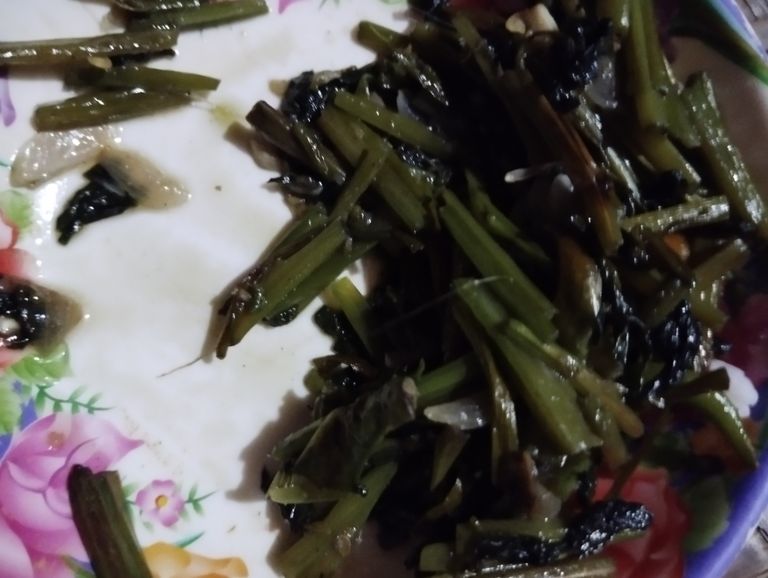
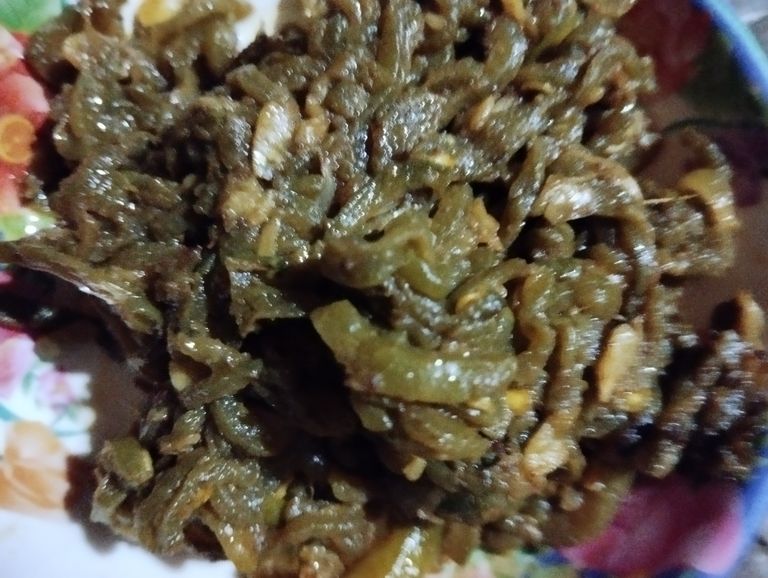
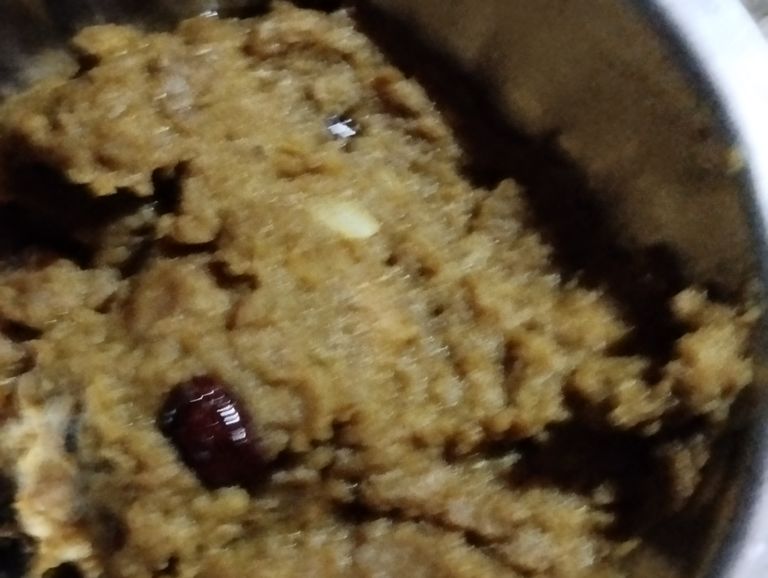
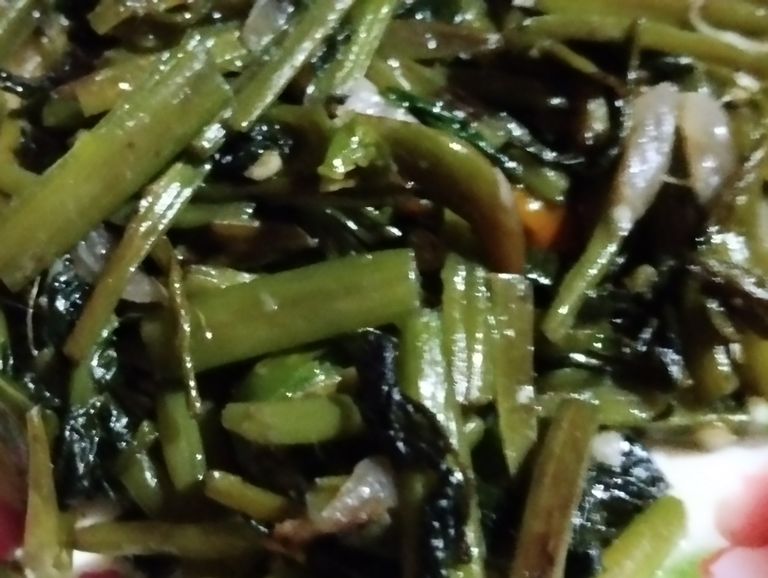
Recipe: Bengali Style Pui Shaak Malabar Spinach Curry.
Introduction: Pui Shaak, also known as Malabar spinach, is a versatile leafy green popular in Bengali cuisine. Known for its thick, succulent leaves, it pairs well with a variety of vegetables, fish, or even lentils. In this blog, we’ll explore a traditional Bengali-style Pui Shaak curry, made with pumpkin, eggplant, and prawns. This delicious dish is not only healthy but also full of flavor, making it a staple in many Bengali households.
Ingredients:
Pui Shaak (Malabar spinach) – 2 bundles (around 400g)
Pumpkin – 200g (cut into small cubes)
Eggplant (Brinjal) – 1 medium-sized (cut into small cubes)
Prawns (optional) – 100g (cleaned and deveined)
Mustard oil – 3 tablespoons
Nigella seeds (kalonji) – 1/2 teaspoon
Dry red chilies – 2
Turmeric powder – 1 teaspoon
Red chili powder – 1/2 teaspoon
Salt – to taste
Sugar – 1 teaspoon
Green chilies – 2 (slit)
Bori (fried lentil dumplings) - optional – 8-10 pieces
Instructions:
Step 1: Preparing the Pui Shaak
- Cleaning: Wash the Pui Shaak thoroughly under running water to remove any dirt or grit. Separate the leaves and tender stems. Chop them finely.
- Blanching (Optional): If you prefer a softer texture, you can blanch the Pui Shaak in boiling water for 2-3 minutes. Drain and set aside.
Step 2: Fry the Prawns and Bori
- Fry the prawns: Heat 1 tablespoon of mustard oil in a pan. Add the cleaned prawns, sprinkle a pinch of turmeric, and fry them until they turn golden. Set aside.
- Fry the bori: In the same pan, fry the lentil dumplings (bori) until crispy. Set aside.
Step 3: Cooking the Vegetables
- Heat the oil: In the same pan, heat the remaining mustard oil.
- Tempering: Add nigella seeds and dry red chilies to the hot oil. Sauté for a few seconds until they release their aroma.
- Add vegetables: Toss in the cubed pumpkin and eggplant. Stir fry for 3-4 minutes.
- Add spices: Sprinkle turmeric powder, red chili powder, and salt over the vegetables. Mix well.
- Cook until soft: Cover and cook on medium heat for about 10-12 minutes, stirring occasionally, until the vegetables are tender.
Step 4: Adding the Pui Shaak
- Add the Pui Shaak: Once the vegetables are cooked, add the chopped Pui Shaak. It will reduce in volume as it cooks, so don’t worry if the pan looks full initially.
- Cook together: Stir well and cook for another 5-7 minutes until the greens are wilted and tender.
Step 5: Final Touches
- Add prawns and bori: Add the fried prawns and bori back into the pan. Mix well.
- Season: Adjust salt and add a pinch of sugar for balance. Toss in the slit green chilies for added heat.
- Cook for 2 more minutes: Allow everything to cook together for a couple of minutes so the flavors can meld.
Step 6: Serve
Your Pui Shaak curry is now ready to be served! This dish pairs beautifully with steamed rice, making it a comforting and wholesome meal. You can enjoy it with dal and some fried fish for a complete Bengali-style spread.
Tips & Variations:
Vegetarian option: If you want to keep the dish vegetarian, skip the prawns and increase the quantity of vegetables or bori.
Spice level: Adjust the amount of green chilies and red chili powder according to your taste preference.
Add lentils: Sometimes, small quantities of cooked lentils like moong dal can be added to give a thicker consistency and add protein.
Nutritional Benefits:
Pui Shaak is packed with vitamins A and C, along with iron and calcium. It’s low in calories and high in fiber, making it excellent for digestion and overall health. Pairing it with vegetables like pumpkin adds beta-carotene, while prawns provide lean protein and essential omega-3 fatty acids.
Conclusion:
This Bengali-style Pui Shaak curry is a delightful combination of greens, vegetables, and prawns that showcases the versatility of Pui Shaak in Bengali cuisine. The earthy flavors of the mustard oil and nigella seeds, along with the sweetness of pumpkin and the mild bitterness of eggplant, create a balanced, flavorful dish that’s perfect for lunch or dinner. Whether you’re looking to recreate a traditional Bengali meal or simply want to try something new, this Pui Shaak recipe is sure to satisfy your taste buds and keep you coming back for more.
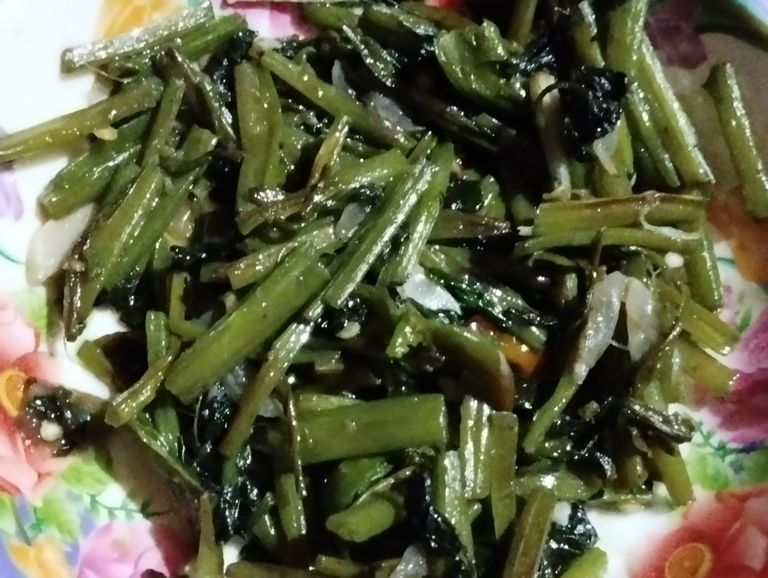
Proper Cultivation Method of Malabar Spinach Pui Shak.
Introduction
Malabar spinach, commonly known as "Pui Shak" in Bengali, is a popular leafy vegetable in tropical and subtropical regions. It is a vine plant that thrives in warm, humid climates and is rich in vitamins A, C, and iron. This versatile vegetable is used in a variety of dishes and is also valued for its medicinal properties. Here's a detailed guide to the proper cultivation method of Malabar spinach.
- Varieties of Malabar Spinach
Malabar spinach comes in two main varieties:
Green Malabar Spinach (Basella alba): This variety has light green stems and leaves.
Red Malabar Spinach (Basella rubra): This variety features reddish stems and darker green leaves with a slight red tinge.
Both varieties are easy to grow and have similar cultivation practices.
- Soil Preparation
Soil Type:
Malabar spinach grows best in well-drained, fertile soil rich in organic matter. Sandy loam or loamy soil with good water retention capacity is ideal.
Soil pH:
The preferred pH range for growing Pui Shak is between 6.0 and 6.8. If the soil is too acidic, applying lime can help balance the pH level.
Fertilizer Application:
Before planting, prepare the soil by adding well-decomposed organic manure, compost, or cow dung. A mix of nitrogen, phosphorus, and potassium (NPK) fertilizers can be used to promote vigorous growth. Organic matter improves the structure of the soil and enhances moisture retention.
- Climate Requirements
Malabar spinach thrives in warm, humid climates. It prefers temperatures ranging between 25°C to 35°C (77°F to 95°F). This plant is highly sensitive to cold, so it's important to avoid planting in regions with frost. It can grow well in partial shade but yields best in full sunlight.
- Planting Methods
Propagation:
Malabar spinach can be propagated by both seeds and stem cuttings.
Seed Propagation:
Soak seeds in water for 24 hours before planting to improve germination.
Sow seeds directly in the garden or in seed trays. Plant the seeds about 1/2 inch deep in rows.
Spacing between rows should be around 18 to 24 inches, and between plants around 12 to 18 inches to allow proper growth.
Germination usually takes place within 1 to 2 weeks.
Stem Cutting Propagation:
Take 6-8 inch long cuttings from healthy plants.
Plant the cuttings in moist soil, ensuring at least 2-3 nodes are buried in the soil.
Water regularly to encourage rooting. Cuttings usually take root within 7-10 days.
Transplanting:
If started indoors or in seed trays, seedlings can be transplanted into the garden when they have at least 3-4 true leaves. Space them according to the same measurements as direct sowing.
- Watering Requirements
Malabar spinach requires consistent moisture for healthy growth. The soil should be kept moist but not waterlogged. Water the plants regularly, especially during dry periods. A drip irrigation system is ideal for maintaining optimal moisture levels without overwatering.
Mulching with straw, leaves, or grass can help conserve soil moisture and keep weeds in check. Avoid waterlogging, as excessive water can lead to root rot.
- Support and Training
As a climbing vine, Malabar spinach requires support to grow vertically. You can use a trellis, fence, or poles for the vines to climb. Training the plant upward helps in maximizing space and improves air circulation, reducing the chances of fungal diseases.
If you’re growing Malabar spinach in a container, ensure the pot has a trellis or support system.
- Fertilization
During the growing season, Malabar spinach benefits from regular fertilization. Apply a balanced fertilizer (such as a 10-10-10 NPK) every 4-6 weeks to boost growth. Organic fertilizers like compost or vermicompost can also be used to improve soil fertility. Side-dressing with nitrogen-rich fertilizers such as urea promotes leafy growth.
- Pests and Diseases
Malabar spinach is relatively pest-resistant, but some common pests may attack the plant, including:
Aphids: These small insects can cause leaves to curl. Control them using insecticidal soap or neem oil.
Caterpillars: These can eat the leaves. Handpick them or use organic insecticides if necessary.
Snails and Slugs: These pests can cause damage by feeding on leaves, especially in damp conditions. Use organic slug pellets or handpick them during the evening.
Common Diseases:
Downy Mildew: This fungal disease can affect Malabar spinach in high humidity. It causes yellowing and browning of the leaves. Ensure good air circulation and avoid overhead watering.
Root Rot: Overwatering or poorly drained soil can lead to root rot. Ensure the soil drains well to prevent this problem.
- Harvesting
Malabar spinach can be harvested within 50-60 days of planting. Regular harvesting encourages new growth and keeps the plant bushy. You can harvest the tender leaves and stems throughout the growing season.
For Leafy Harvest: Pick young, tender leaves for consumption as they are tastier and more nutritious. Avoid waiting until the leaves turn too large or tough.
For Stem Cutting: If you're growing from cuttings, regularly trim the vines to maintain plant vigor.
After harvesting, the leaves should be used fresh as they do not store well. However, if needed, they can be stored in the refrigerator for a short period.
- Post-Harvest Care
Storage: Malabar spinach leaves are best consumed fresh. If necessary, store them in a plastic bag in the refrigerator for up to a week. Blanching and freezing can also extend their shelf life.
Processing: Some farmers opt to dry the leaves or stems for later use in soups and stews.
- Benefits of Malabar Spinach
Malabar spinach is not only easy to grow but also offers a range of health benefits:
Rich in Nutrients: High in vitamins A and C, iron, and calcium.
High in Fiber: Good for digestive health.
Antioxidant Properties: Contains flavonoids and other compounds that help protect the body from oxidative stress.
Low in Calories: Ideal for weight-conscious individuals.
Conclusion
Growing Malabar spinach is a rewarding experience, as it is a highly nutritious and fast-growing vegetable. By following the correct soil preparation, planting, watering, and fertilization methods, you can enjoy a continuous supply of this leafy green throughout the growing season. Whether for home gardening or commercial farming, Pui Shak cultivation is relatively low-maintenance and adaptable to different growing conditions.
